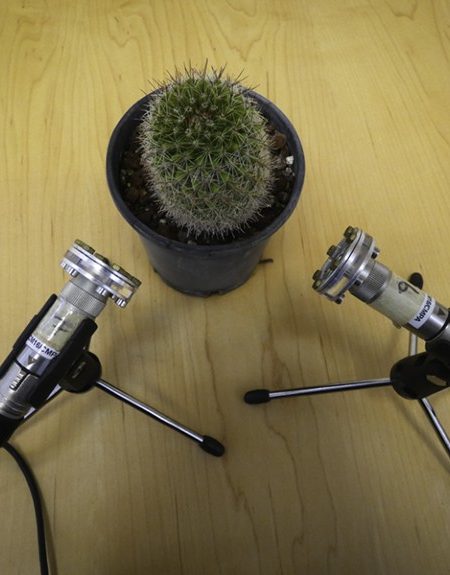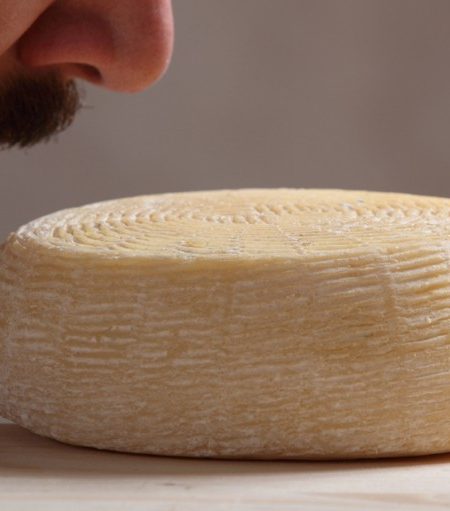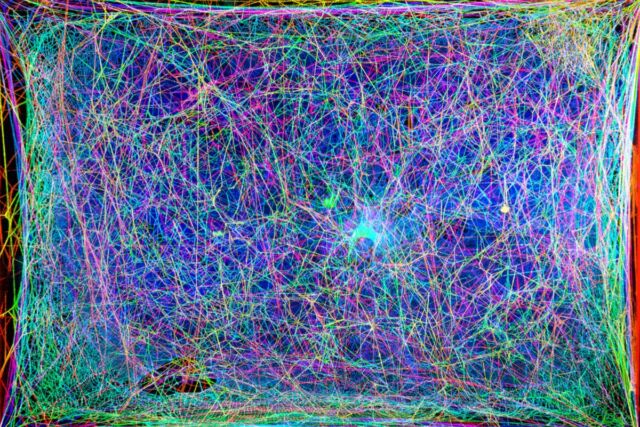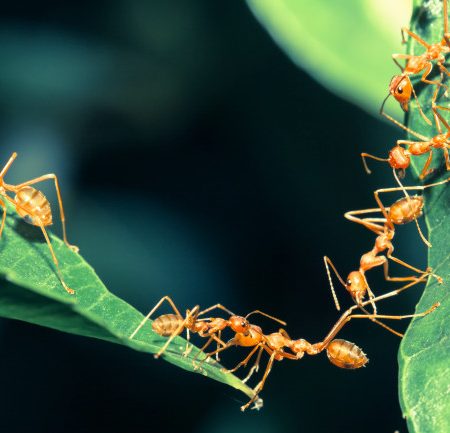We may one day be able to communicate with spiders in “language” of web vibrations.
A spider weaving its intricate web is a bit like a person composing a song, at least in the eyes of MIT materials engineer Markus Buehler, whose research involves translating web structure into musical melodies. Together with his collaborators, he has devised a way for humans to “enter” a 3D spider web and explore its structure both visually and aurally via a virtual reality setup. Buehler described the ongoing project during a talk at the (virtual) meeting of the American Chemical Society (ACS) this week.
The work may one day lead to a means of rudimentary communication with spiders in their own “language” of web vibrations, such as when they stretch a strand of silk while building a web or when the strands vibrate in response to a gust of wind or to the presence of trapped prey. “The spider lives in an environment of vibrating strings,” Buehler said during an online press conference. “They don’t see very well, so they sense their world through vibrations, which have different frequencies.”
As we’ve reported previously, several years ago, Buehler led a team of MIT scientists that mapped the molecular structure of proteins in spider silk threads onto musical theory to produce the “sound” of silk in hopes of establishing a radical new way to create designer proteins. The hierarchical elements of music composition (pitch, range, dynamics, tempo) are analogous to the hierarchical elements of a protein structure. Much like how music has a limited number of notes and chords and uses different combinations to compose music, proteins have a limited number of building blocks (20 amino acids) that can combine in any number of ways to create novel protein structures with unique properties.
That work inspired a sonification art exhibit, “Spider’s Canvas,” in Paris in 2018. Artist Tomas Saraceno worked with MIT engineers to create an interactive harp-like instrument inspired by the web of a Cyrtophora citricola spider, with each strand in the “web” tuned to a different note. To create the harp, the team scanned a spider web with a laser to capture the 2D cross-sections and then reconstructed that 3D network with computer algorithms. Next they assigned specific frequencies to the web strands to serve as musical notes. Combine those notes in various patterns in the web’s 3D structure and you can generate melodies.
“The sounds are very complex, and they don’t sound like conventionally tuned instruments, because of course a spider does not use the same tuning system we do in musical creation,” said Buehler. “Rather, the spider has tuned the web to their own idea of how the web should be tuned as the optimal sensor, an optimal prey-catching apparatus. It’s quite haunting in its sounds—unusual, but quite beautiful.”
In 2019, Buehler’s team subsequently developed an even more advanced system of making music out of a protein structure—and then converting it back to create novel proteins never before seen in nature. They assigned each amino acid a tone based on its natural resonant frequency—actually more akin to a chord, since amino acids vibrate at several overlapping frequencies. The different 3D structures of the molecules determined the duration of each tone.
Since there are 20 amino acids, this produced a 20-tone scale. The team also developed a free Android app, called the Amino Acid Synthesizer, so users can create their own protein “compositions” from the sounds of amino acids. And last year, Buehler’s lab applied the same approach to model the vibrational properties of the spike protein responsible for the high contagion rate of the novel coronavirus SARS-CoV-2.
Buehler’s presentation at the ACS meeting focused primarily on the virtual reality environment that allows the user to enter a virtual spider web and wander through its structure The idea is that one might be able to pick up more interesting structural features by combining both vision and hearing, since it gives the user a much richer sensory experience of the spider web.
While most people are familiar with two-dimensional spider webs, according to Buehler, most spiders actually build three-dimensional cobwebs, and it was those structures he was most interested in exploring through sound. He thinks of spiders as “autonomous 3D printers,” constructing their webs without any supportive scaffolding, unlike manmade 3D printing processes. “So we have a material that is created or spun by the spider in real time with a very low energy consumption, creating these very complex structures in three-dimensional space,” Buehler said.
Some of the MIT experiments involved scanning a spider web as it was being constructed, translating each stage into music so the team could study the process in audible form. “We can create a harp for each construction state, so you can begin to see how the spider harp actually changes during the construction, almost like a living musical instrument,” said Buehler. The researchers were also able to virtually study how the web’s sound changes in response to different mechanical forces, such as stretching a particular strand and increasing the tension until the strand breaks, producing a snapping sound.
The ultimate aim is to learn to create similar synthetic spiderwebs and other structures that mimic the spider’s process. “We’re interested in changing the overall paradigm of how we think about materials,” said Buehler. “A spider is able to sense the integrity of the web through the vibrations. If it’s damaged, they can repair it. They have a whole different relationship to the structure they built; they are actually a part of it.” He imagines future manmade structures, such as bridges, designed with a similar built-in repair mechanism. “You wouldn’t build something and wait for it to break, but continuously repair it,” he said. “It would become a living organism.”
Spiders use their webs to catch prey, but they also use them to collect sensory information via the vibrations of the various strand and as a means of communication, tapping the web to produce vibrational patterns. In other experiments, Buehler et al. recorded the various web vibrations as the spiders went about different activities: constructing their webs or sending courtship signals, for example. They designed a special machine-learning algorithm to distinguish between the various sounds, since the frequencies pretty much all sound alike to human ears.
“Now we’re trying to generate synthetic signals to basically speak the language of the spider,” Buehler said. “If we expose them to certain patterns of rhythms or vibrations, can we affect what they do, and can we begin to communicate with them? Those are really exciting ideas.”
Listing image by Isabelle Su and Markus Buehler
Source: MIT scientists study spider web structure by translating it into music | Ars Technica

The Connection Between Saliva And Flavour Perception? | Slurp

Stressed plants ‘cry’ — and some animals can probably hear them | Nature

Could the metaverse help predict and produce movie blockbusters? | World Economic Forum

Scent adds more dimension to exhibits and stories & enhance perception and interaction | Denver Art Museum

Why Clinique’s Next Move In The Metaverse Is A Winning Formula For Web3 Retail | Forbes

How to Use the 5 Senses — Plus a Secret 6th One — to Catapult Your Brand Experience | MarketBeat





































